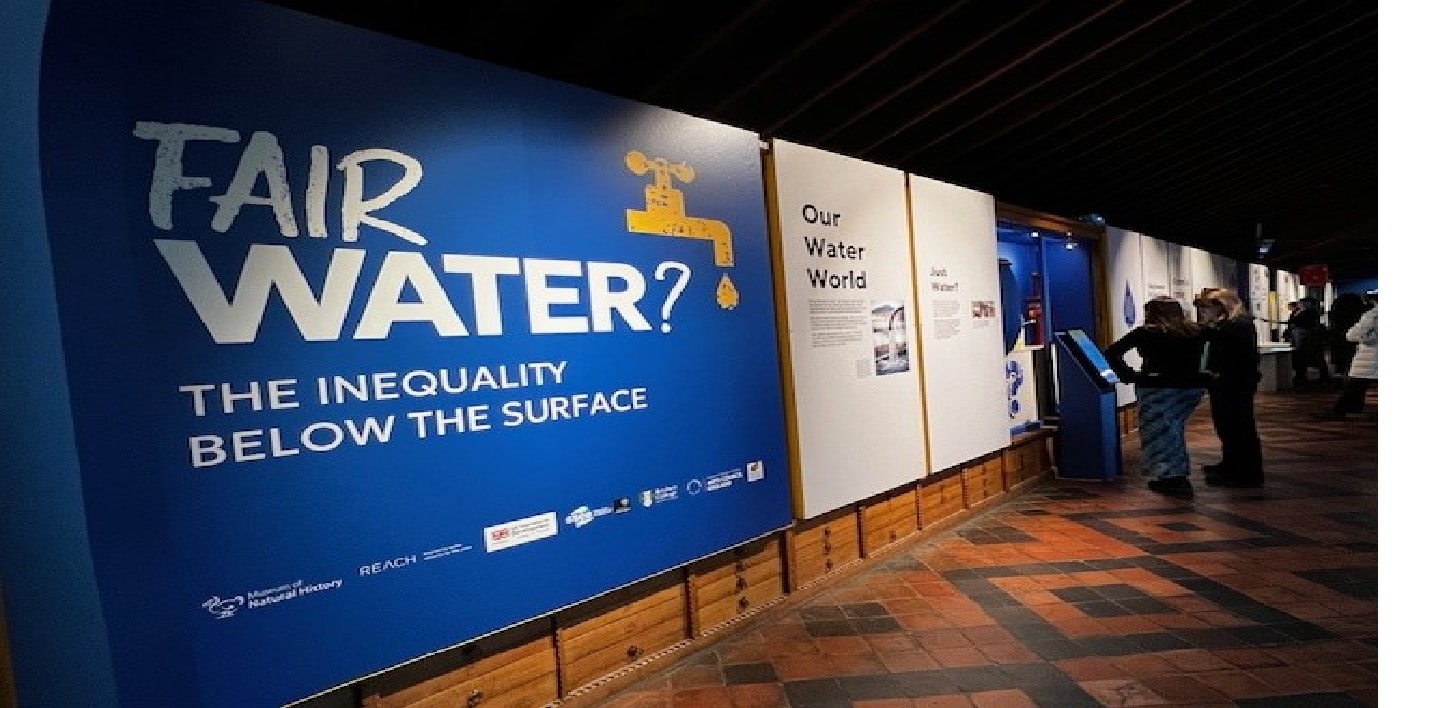Fair Water? An exhibition of the inequality below the surface at Oxford’s Natural History Museum
Friday 15th Dec 2023, 4.30pm

A fascinating and thought-provoking exhibition Fair Water? has opened in Oxford’s Museum of Natural History. A collaboration between the museum and Oxford University’s REACH programme, which aims to improve water security for the poor by delivering world-class science, Fair Water challenges perceptions about the world’s most abundant – and yet scarce – resource.
The global problems around water scarcity and quality are brought to life by the accessible and interactive exhibition and visitors can learn about the global barriers to water equality. It is an immersive journey along a river from source to mouth, and reveals the inequality below the surface through research, art and interactive installations.
Alice Chautard of the Reach programme, says, ‘Water is a natural resource, and it is managed by humans, and as for everything that is managed by humans, it becomes a political and ethical issue.’
The exhibition represents research from over one hundred researchers…It shows how research, undertaken with governments, UNICEF and NGOs can tackle these difficult challenges to benefit everyone
Professor Katrina Charles
Professor Katrina Charles, co-director of the REACH programme, says, ‘The exhibition represents research from over one hundred researchers, from across the work and diverse disciplines. It shows how research, undertaken with governments, UNICEF and NGOs can tackle these difficult challenges to benefit everyone’.
One display demonstrates the massive impact of water insecurity on women, with collecting water being ‘women’s work’ in many countries around the world. Another intriguing exhibit demonstrates the impact of changing weather on water supplies and the landscape. But perhaps the most shocking displays are the revelations that 1.2 million people die each year from water-related illnesses while 2.21 billion people internationally do not have access to clean, safe drinking water close to home.
Meanwhile, fascinating specimens from the Museum’s collections illustrate the effects of climate change and pollution on aquatic wildlife and farming livestock. Skeletons of the vanishingly rare Ganges River Dolphin, a Helicopter Catfish and a Fishing Cat feature in a display about drought and water pollution; while specimens of British freshwater fish and insects demonstrate what ecosystems, and individual species can tell us about the health of rivers.
A striking photographic series by renowned Ethiopian photographer and contemporary artist, Aïda Muluneh is a highlight of the display. Currently starring in Tate Modern’s A World in Common exhibition, Muluneh’s series, WaterLife, was commissioned by Water Aid and responds to the undeniable impact of life without clean water on women’s lives and futures.
The Fair Water exhibition runs until September 2024.

